And yes, I know whales aren't "Big Fish" in any literal sense.
But the "big" certainly pertains. Here's one of my shots from the cruise: Compare the size of the tail to the size of the boat. Whales are huge animals.
Stellwagen is rich with sea life. Part of it is that the relatively shallow water allows sunlight to reach the top of the Banks. Part of it is that the Banks are a physical obstacle to ocean currents, which causes mixing of the colder, nutrient-rich waters from the north with the warmer waters of Massachusetts and Cape Cod Bays, and the tropical gyres spinning off the Gulf Stream.
To baleen whales --- like the two pods of humpbacks (that's humpback tail, above) and a minke we saw --- the summertime Stellwagen waters are a free buffet.
I recorded a GPS track of the trip. Here's the overall schematic, so you can orient yourself:
Here's a closeup of just the on-water part of the tip, with a seafloor overlay, so you can see the track in relation to the Banks.
That knot of looping gps tracks at the lower end of the Banks is where we found the whales; feeding off the southern Stellwagen boundaries.
Closer still:
Here's what it looked like above water:
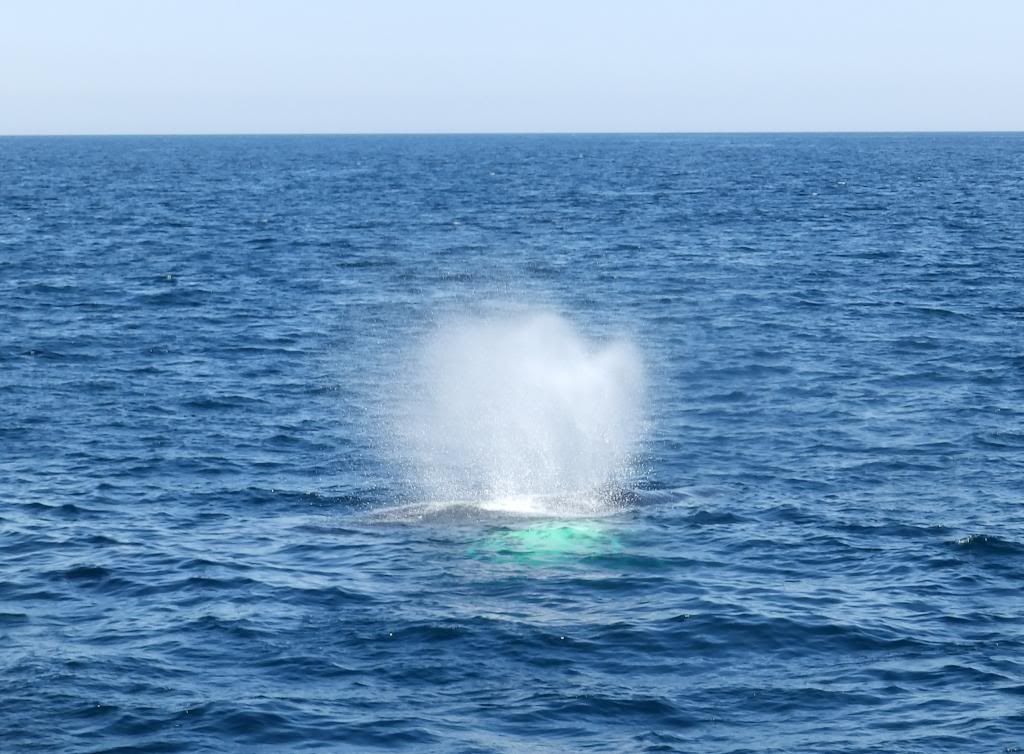
Here's why they're called humpbacks:
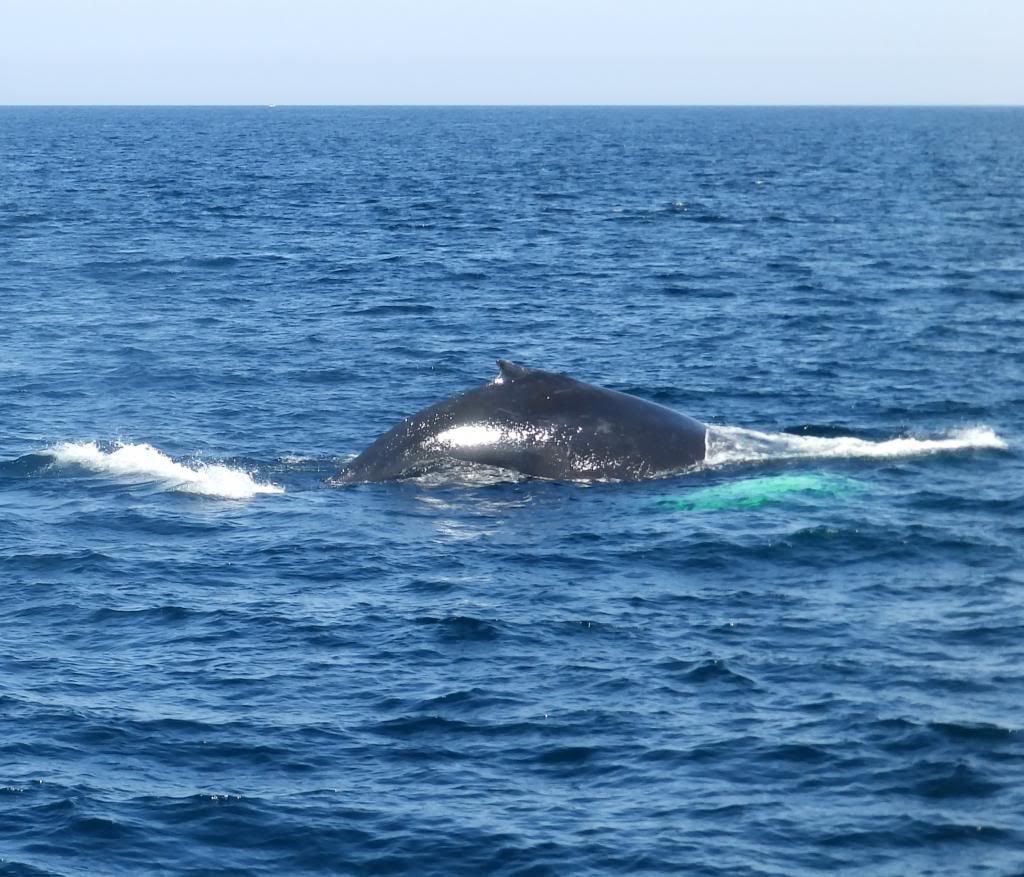
The humpback is also notable for two very long, wing-like pectoral fins; and for its strong association with Stellwagen in particular and New England in general. In fact, the humpback's scientific name is Megaptera novaeangliae: "big-winged New Englander."
The "big wings" --- the pectoral fins --- are largely white, which makes the whales easy to spot even when they're shallowly submerged, such as when they're deep-breathing near the surface in preparation for a typical 5-10 minute feeding dive. Note the white (greenish, after filtering through the water) area to the right:
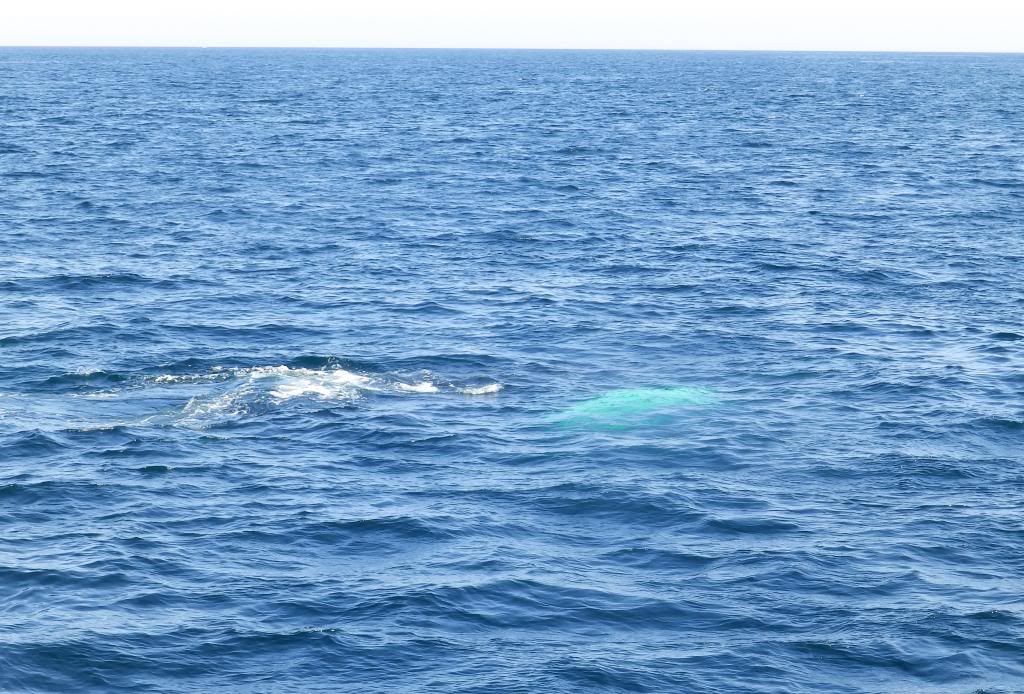
The whales put on quite a show:
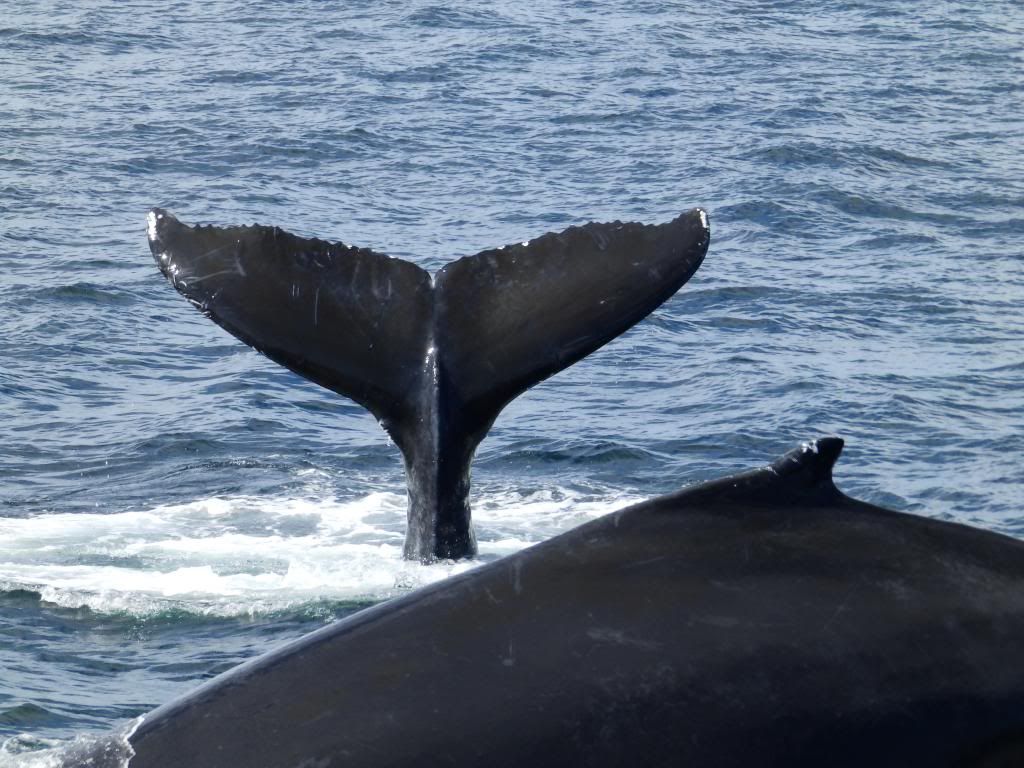

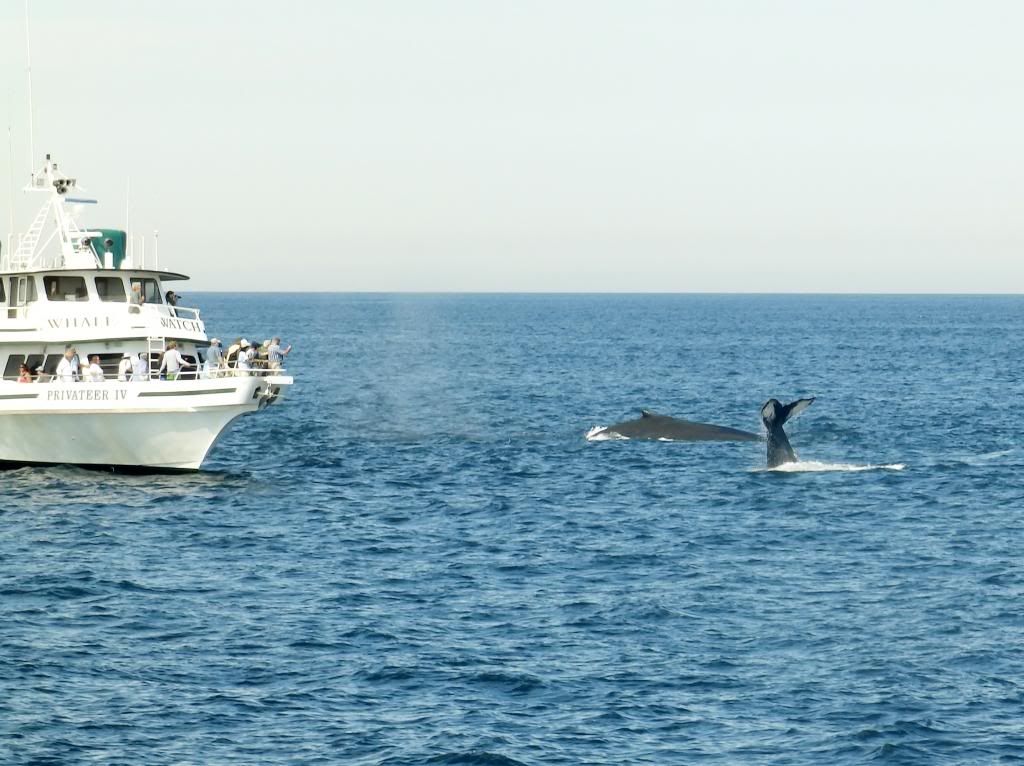
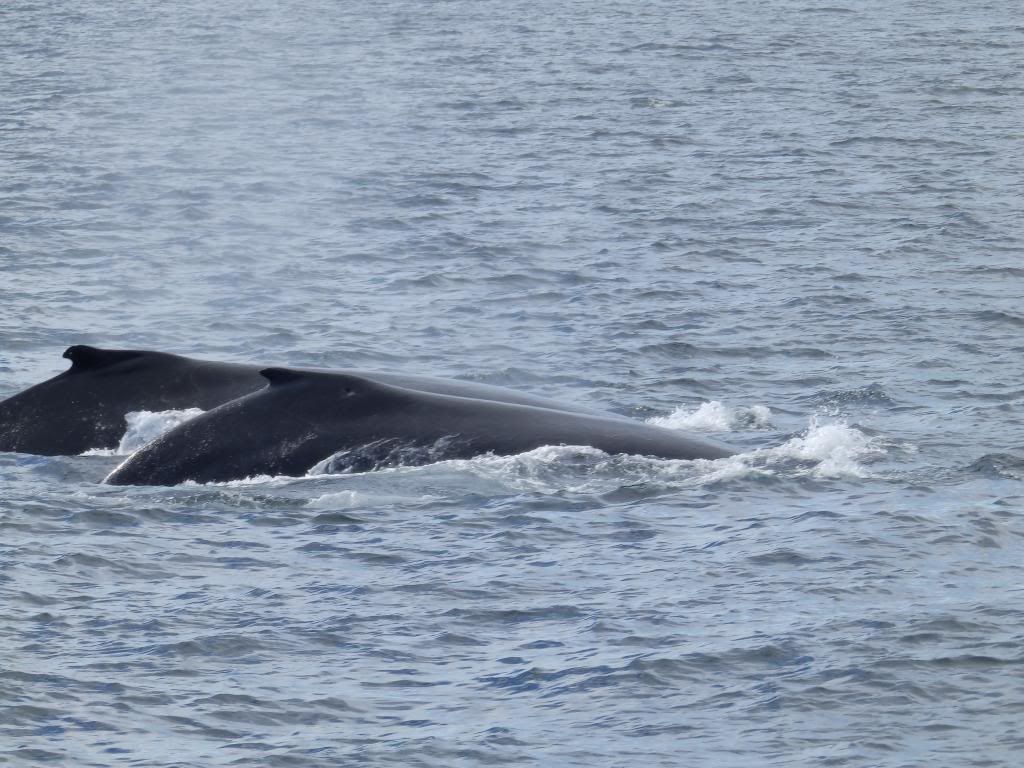

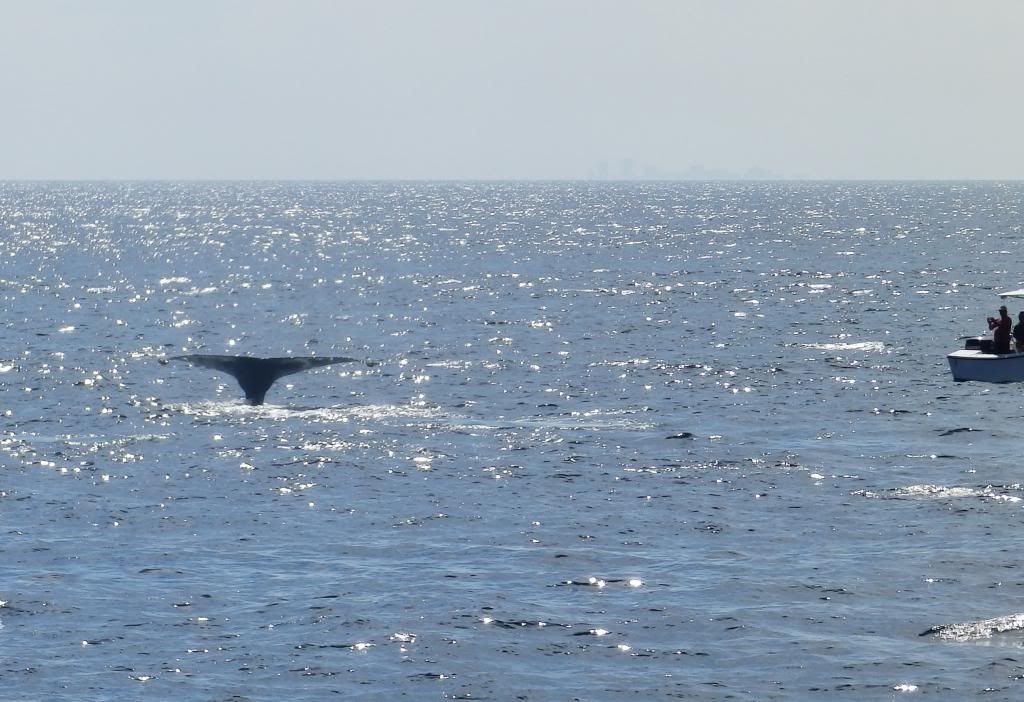
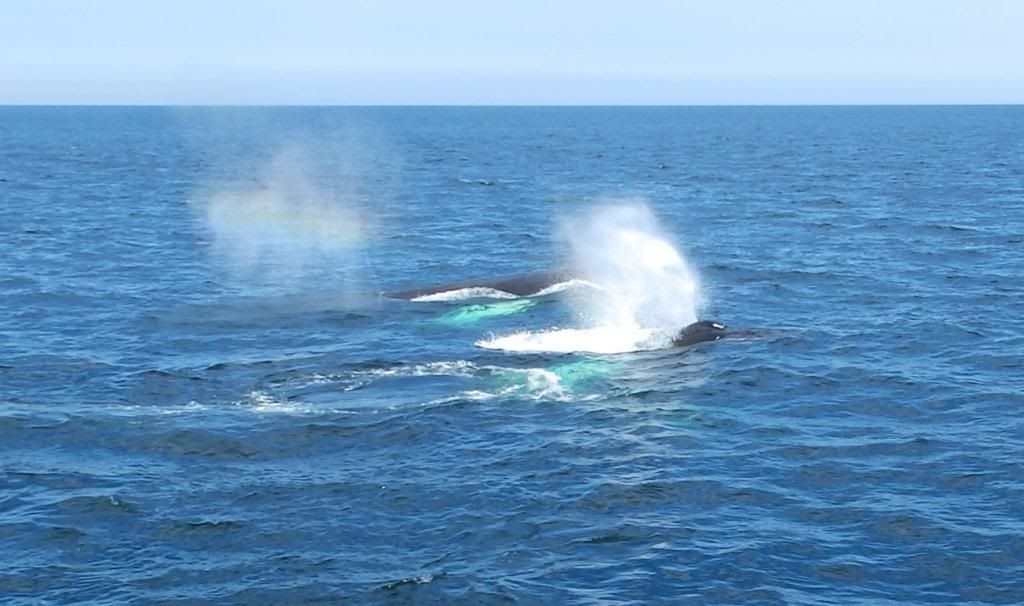
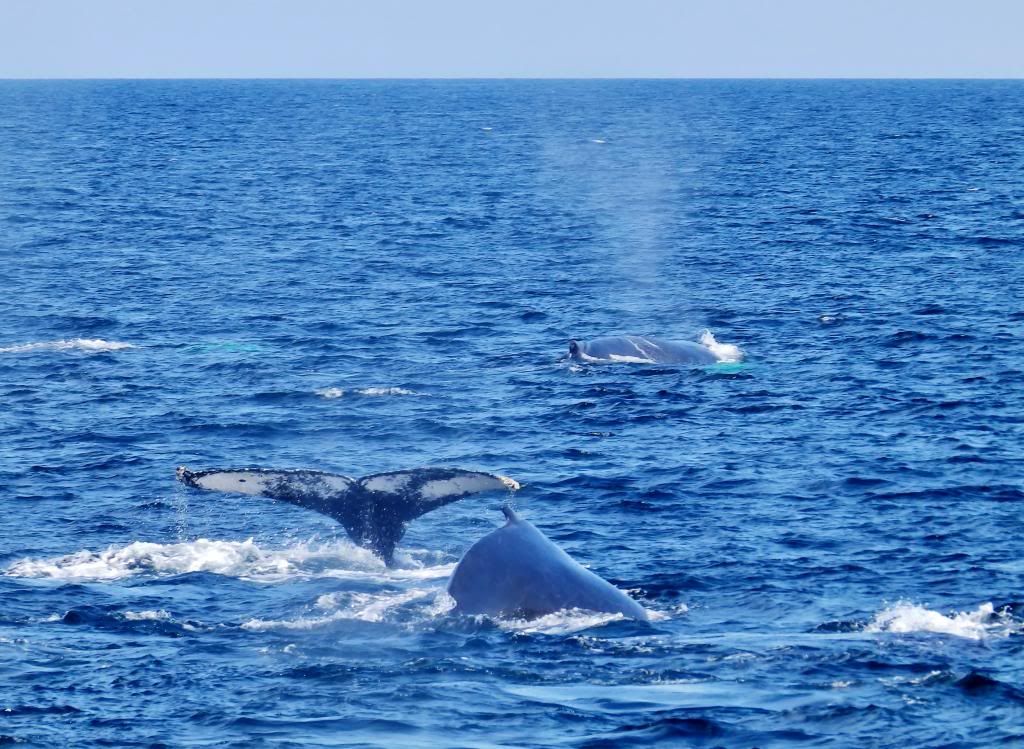
Here's a brief slideshow of the whole trip, starting in scenic Gloucester harbor and heading out to sea; with lots of whale shots.
Set the slideshow speed to "fast" for best effect:
http://s225.photobucket.com/user/flanga_bucket/slideshow/Jy%202014%20whale%20watch
Stellwagen Banks are on most "top 10" lists for whale watching. Commercial tours leave from Boston, Gloucester, Salem, Provincetown, and many other New England coastal towns and cities.
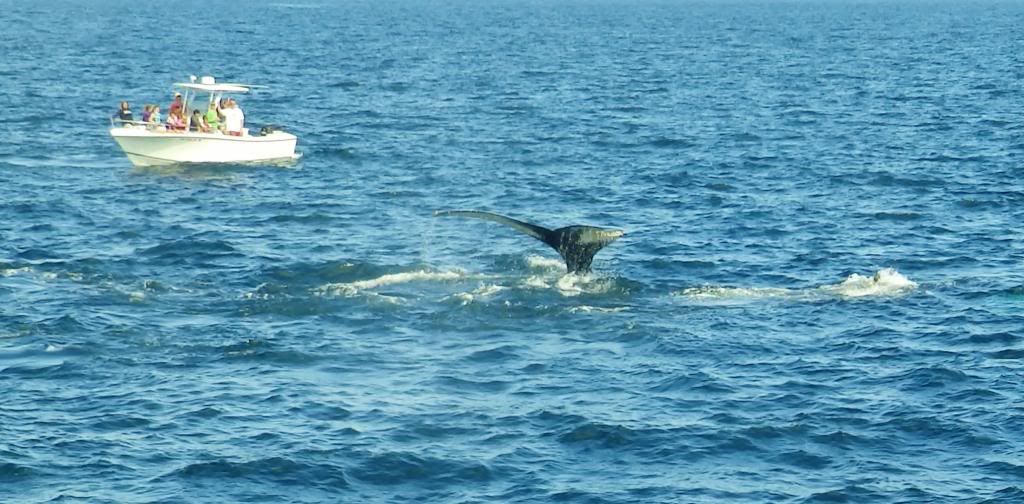



No comments:
Post a Comment